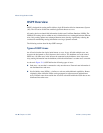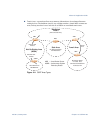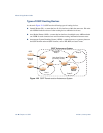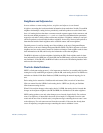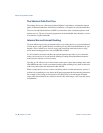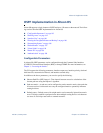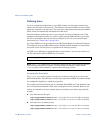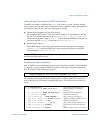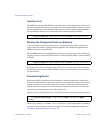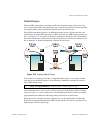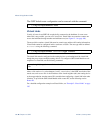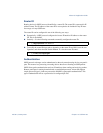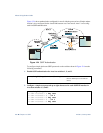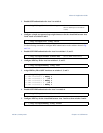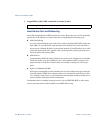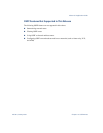
Alteon OS Application Guide
196
Chapter 12: OSPF 42C4911, January 2007
Interface Cost
The OSPF link-state algorithm (Dijkstra’s algorithm) places each routing device at the root of a
tree and determines the cumulative cost required to reach each destination. Usually, the cost is
inversely proportional to the bandwidth of the interface. Low cost indicates high bandwidth.
You can manually enter the cost for the output route with the following command:
Electing the Designated Router and Backup
In any area with more than two routing devices, a Designated Router (DR) is elected as the
central contact for database exchanges among neighbors, and a Backup Designated Router
(BDR) is elected in case the DR fails.
DR and BDR elections are made through the hello process. The election can be influenced by
assigning a priority value to the OSPF interfaces on the GbE Switch Module. The command is
as follows:
A priority value of 255 is the highest, and 1 is the lowest. A priority value of 0 specifies that
the interface cannot be used as a DR or BDR. In case of a tie, the routing device with the low-
est router ID wins.
Summarizing Routes
Route summarization condenses routing information. Without summarization, each routing
device in an OSPF network would retain a route to every subnet in the network. With summa-
rization, routing devices can reduce some sets of routes to a single advertisement, reducing
both the load on the routing device and the perceived complexity of the network. The impor-
tance of route summarization increases with network size.
Summary routes can be defined for up to 16 IP address ranges using the following command:
where <range number> is a number 1 to 16, <IP address> is the base IP address for the range,
and <mask> is the IP address mask for the range. For a detailed configuration example, see
“Example 3: Summarizing Routes” on page 211.
>> # /cfg/l3/ospf/if <OSPF interface number>/cost <cost value (1-65535)>
>> #
/cfg/l3/ospf/if <OSPF interface number>/prio <priority value (0-255)>
>> # /cfg/l3/ospf/range <range number>/addr <IP address>/mask
<mask>



